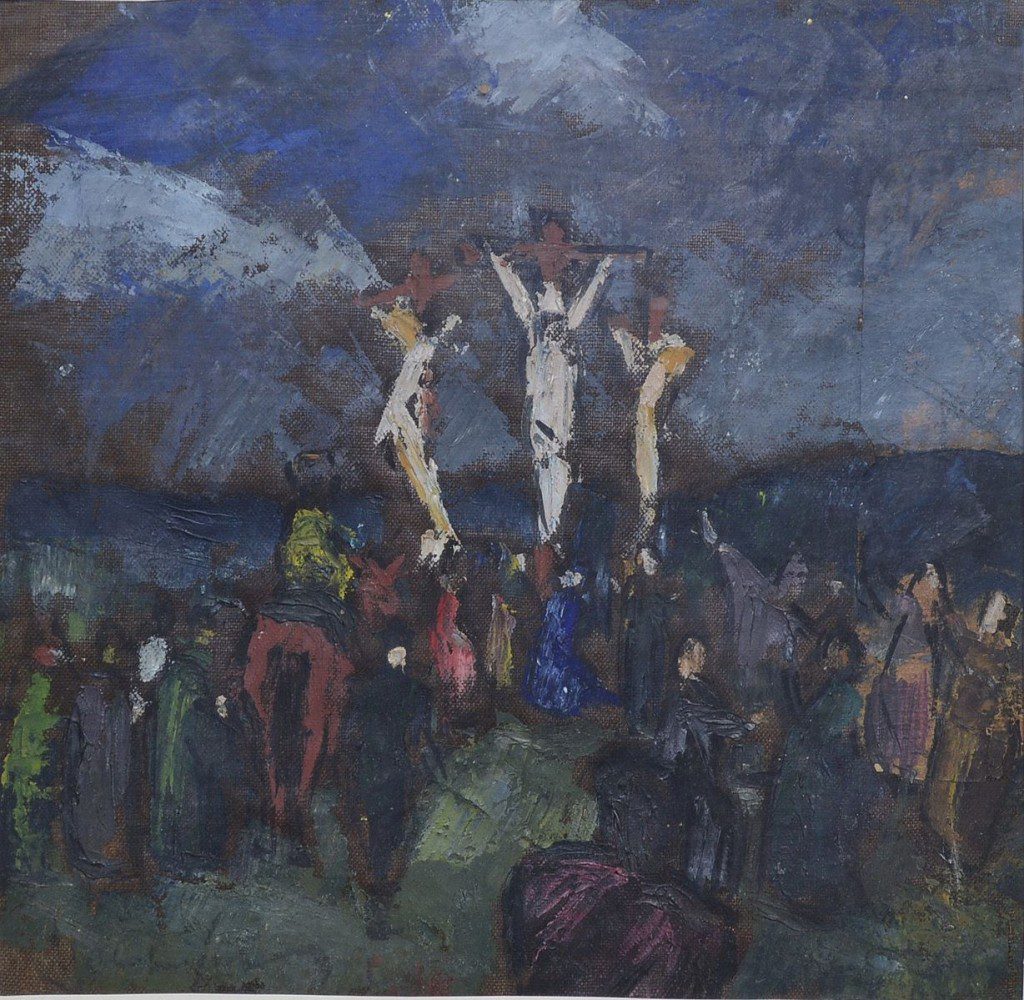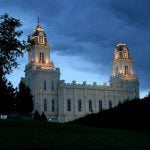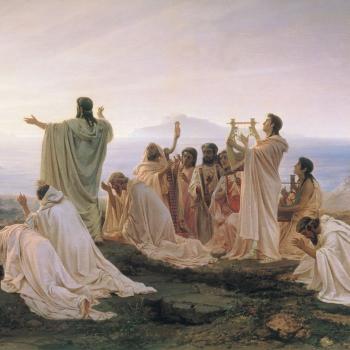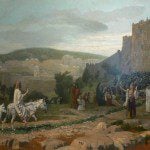
The principal action of Acts 2 occurs on Pentecost, as Acts 2:1 explains: “When the day of Pentecost arrived, they were all together in one place.”
The mainstream Christian holy day of Pentecost, which is still celebrated fifty days after Easter Sunday — meaning, of course, that it too always occurs on a Sunday — recalls the descent of the Holy Ghost upon the apostles and other disciples of Jesus while they were in Jerusalem marking the Festival of Weeks, or Shavuot (שבועות). The Greek word πεντηκοστή (pentēkostē) means “fiftieth.” The Feast or Festival of Weeks is a harvest festival that is celebrated seven weeks and one day after the first Sabbath of Passover or the Feast of Unleavened Bread.
Which is a long-winded way of explaining that the narrative of Acts 2 concerns the fiftieth day after the resurrection of Christ on Easter Sunday. According to Acts 1:3, Jesus intermittently appeared to his disciples “over a period of forty days” following his emergence from the tomb, presumably training them and preparing them for their new role as the leaders of the Church. (Ascension Day is traditionally celebrated on the fortieth day after Easter Sunday.) So Pentecost comes ten days after Christ ascended into heaven, and, so far as we are aware, it marks the apostles’ first public preaching after the death and resurrection of Jesus.
I’ll discuss only a very small part of the narrative, Acts 2:14, 22-24, 36, using the English Standard Version (ESV) as my English text. And, where it’s specifically cited, I’m also using Mikeal C. Parsons and Martin M. Culy, Acts: A Handbook on the Greek Text (Waco: Baylor University Press, 2003), to which I will refer as Parsons/Culy:
14 But Peter, standing with the eleven, lifted up his voice and addressed them: “Men of Judea and all who dwell in Jerusalem, let this be known to you, and give ear to my words. . . . 22 “Men of Israel, hear these words: Jesus of Nazareth, a man attested to you by God with mighty works and wonders and signs that God did through him in your midst, as you yourselves know [καθὼς αὐτοὶ οἴδατε]— 23 this Jesus, delivered up according to the definite plan and foreknowledge of God, you crucified and killed [προσπήξαντες ἀνείλατε] by the hands of lawless [ἀνόμων] men. 24 God raised him up, loosing the pangs of death, because it was not possible for him to be held by it. . . . 36 Let all the house of Israel therefore know for certain that God has made him both Lord and Christ, this Jesus whom you crucified [ὃν ὑμεῖς ἐσταυρώσατε].”
1:22 — “as you yourselves know” [καθὼς αὐτοὶ οἴδατε] — “This rhetorically powerful clause implies that the listeners were slow to accept the implications of what they knew to be true.” (Parsons/Culy 36).
1:23 — προσπήξαντες (literally, “having nailed up”)
1:23 — “killed” [ἀνείλατε] — The verb here comes from ἀναιρέω (“to bear away,” “to carry away,” “to destroy”). Its ending is already in the second person plural, which shows that Peter is directly addressing his audience. But it isn’t emphatic. Not yet.
1:23 — The “lawless men” (literally a-nomoi, “people without law”) were presumably the Romans and the Roman soldiers. They were Gentiles. But they were merely the instruments of the truly guilty, who killed Jesus “by the[ir] hands.” “You crucified and killed” him, Peter says to the “men of Judea and all who dwell in Jerusalem” (2:14) and to the “men of Israel” (1:22).
1:24 — “whom you crucified” [ὃν ὑμεῖς ἐσταυρώσατε] — The verb σταυρόω (“to crucify”) derives from the noun σταυρός (cross). Like ἀνείλατε above (“you [pl.] killed”), this verb, which is already in the second person plural, does not need an independently standing pronoun (“you” [pl.]” for its reference to be clear. The freestanding ὑμεῖς (“you” [pl.]), standing before the verb, is emphatic: “whom you killed.” “The overt fronted subject pronoun clearly identifies the agents of Jesus’ crucifixion, helps bring the speech to its climax, and implicitly calls for a response from the listeners” (Parsons/Culy 43).
Assuming that the account given by Luke in Acts 2 is essentially accurate, I’m very struck by this speech of Peter’s. It depicts belief in the resurrection of Jesus as very, very early. And Peter, who, with the other apostles, had been hiding out in an upper room immediately following the crucifixion of their leader, is now, less than two months later, both (1) flatly and fearlessly accusing his audience of a judicial murder against God’s chosen Christ and (2) publicly proclaiming that Jesus had risen from the tomb at a time when that tomb was presumably well known and when it could easily have been examined. The very authorities who had killed Jesus because they perceived him as a threat to them are still very much in power.












